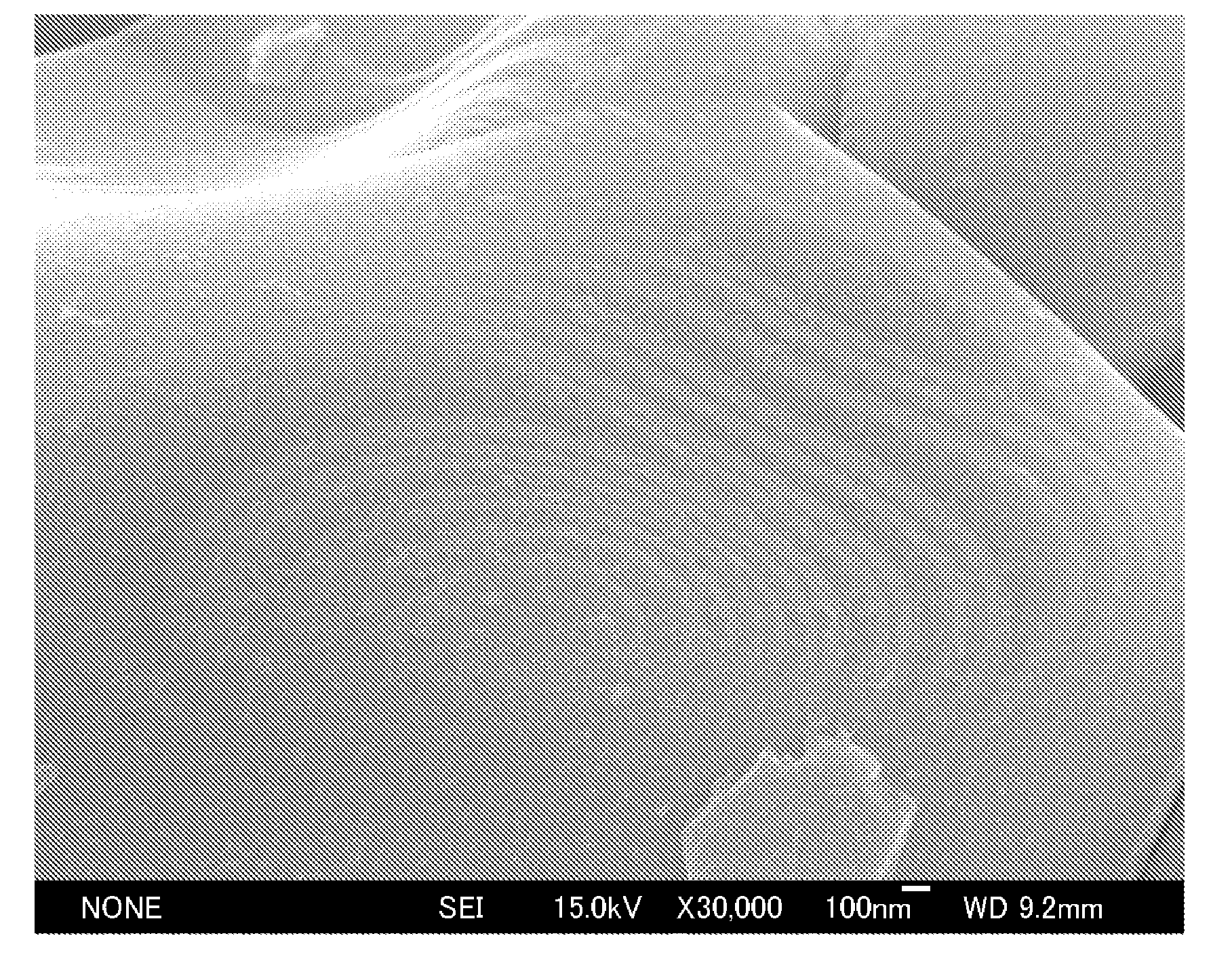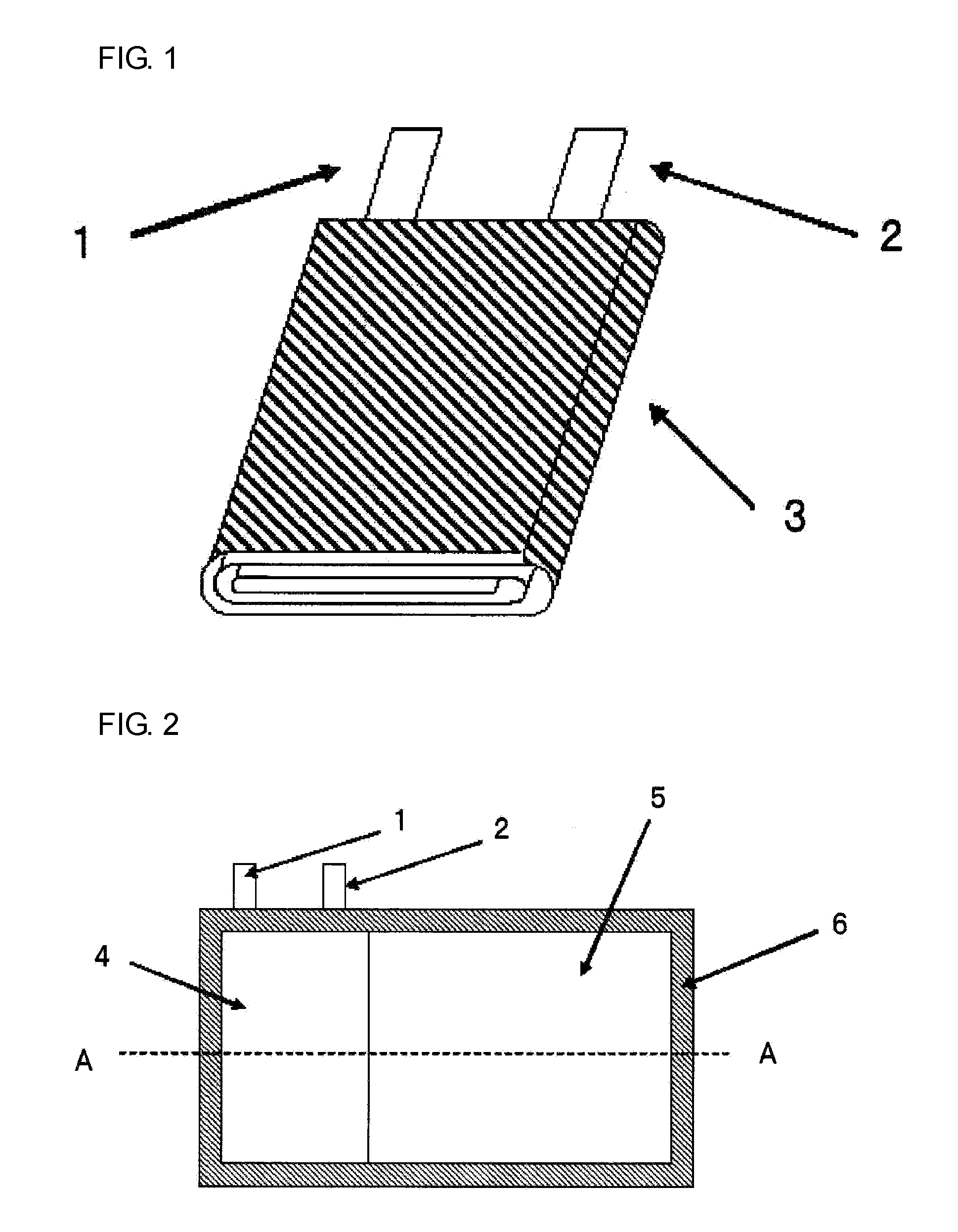Nonaqueous electrolyte secondary battery and method for manufacturing nonaqueous electrolyte secondary battery
a secondary battery and nonaqueous electrolyte technology, applied in the direction of batteries, sustainable manufacturing/processing, cell components, etc., can solve the problems of increasing the internal pressure of the battery, increasing the power consumption, and swelling of the battery, so as to reduce the deterioration of the discharge characteristic
- Summary
- Abstract
- Description
- Claims
- Application Information
AI Technical Summary
Benefits of technology
Problems solved by technology
Method used
Image
Examples
experiment 1
Example A1
Synthesis of Positive-Electrode Active Material
[0055]Lithium cobalt oxide was prepared in which 1.5% by mole of Mg and 1.5% by mole of Al were dissolved in solid solution and 0.05% by mole of Zr was contained. The lithium cobalt oxide was obtained by using Li2CO3, CO3O4, MgO, Al2O3 and ZrO2 to subject them to a heat treatment at 850° C. for 24 hours in an air atmosphere.
[0056]One thousand grams of the lithium cobalt oxide was added to 3 L of pure water and stirred to prepare a suspension containing the lithium cobalt oxide dispersed therein. A solution in which 3.18 g of erbium nitrate pentahydrate was dissolved was added to the suspension. During the addition, the suspension was continuously stirred. While the solution in which erbium nitrate pentahydrate was dissolved was added to the suspension, 10% by mass of sodium hydroxide aqueous solution was also added to maintain the pH of the solution containing the lithium cobalt oxide at 9.
[0057]Next, the resultant mixture was...
example a2
[0079]A positive-electrode active material was produced in the same manner as in Example A1 except that instead of erbium nitrate pentahydrate, 3.54 g of samarium nitrate hexahydrate was used. When the resultant positive-electrode active material was observed with a SEM, particles of a samarium compound having an average particle diameter of 100 nm or less were uniformly deposited on the surface of the positive-electrode active material, like the positive-electrode active material in Example A1. The amount of the samarium compound deposited was 0.12% by mass, in terms of samarium element, relative to the mass of the lithium cobalt oxide.
[0080]Using the above positive-electrode active material, a battery of Example A2 was produced in the same manner as in Example A1.
example a3
[0081]A positive-electrode active material was produced in the same manner as in Example A1 except that instead of erbium nitrate pentahydrate, 3.65 g of neodymium nitrate hexahydrate was used. When the resultant positive-electrode active material was observed with a SEM, particles of a neodymium compound having an average particle diameter of 100 nm or less were uniformly deposited on the surface of the positive-electrode active material, like the positive-electrode active material in Example A1. The amount of the neodymium compound deposited was 0.12% by mass, in terms of neodymium element, relative to the mass of the lithium cobalt oxide.
[0082]Using the above positive-electrode active material, a battery of Example A3 was produced in the same manner as in Example A1.
PUM
| Property | Measurement | Unit |
|---|---|---|
| particle diameter | aaaaa | aaaaa |
| particle diameter | aaaaa | aaaaa |
| particle diameter | aaaaa | aaaaa |
Abstract
Description
Claims
Application Information
 Login to View More
Login to View More - R&D
- Intellectual Property
- Life Sciences
- Materials
- Tech Scout
- Unparalleled Data Quality
- Higher Quality Content
- 60% Fewer Hallucinations
Browse by: Latest US Patents, China's latest patents, Technical Efficacy Thesaurus, Application Domain, Technology Topic, Popular Technical Reports.
© 2025 PatSnap. All rights reserved.Legal|Privacy policy|Modern Slavery Act Transparency Statement|Sitemap|About US| Contact US: help@patsnap.com



